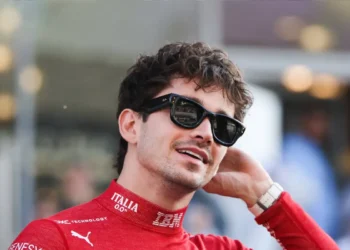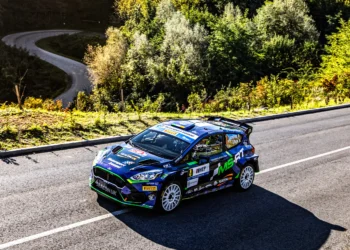Red Bull continues to dominate Formula 1 in 2024, while Mercedes is struggling with the new ground effect regulations. For Mercedes, it seems to be a repeat of the last two years, as demonstrated by their performance in Jeddah, which features fast corners. Lewis Hamilton has expressed concerns about the lack of rear-end confidence in the car, which is a recurring issue. Despite Mercedes’ claims of having addressed fundamental issues with the Mercedes W15, it seems that the problems from 2022 and 2023 are persisting. Although Mercedes has made improvements to the car this year, they are still struggling to fully understand and tackle the challenges posed by the ground effect regulations. It is crucial for everyone in the team to reflect on these issues and acknowledge that there is still a lack of understanding to make the necessary improvements.
The car performs well in low-speed corners, but becomes unstable at the rear in high-speed corners, leading to a lack of driver confidence. This was particularly evident in Jeddah, a high-speed track where the car’s floor is pressed closer to the ground. As speed increases, the downforce produced by the car also increases exponentially. This puts an immense aerodynamic load on the car, requiring proper support from the suspension system. The car’s ride height at 100 km/h is 25 mm at the front and 70 mm at the rear, which, combined with vertical stiffness, is a practical setup. However, relying solely on vertical springs to support the load is not enough, as it would make the car too stiff in slower corners. In fact, the car would end up bottoming out or hitting the ground at around 300 km/h, which is undesirable for any F1 driver.
To ensure stability at high speeds, a front and rear central support spring is added to the suspension system. While the side springs allow for initial movement, the central spring comes into action to support the load in a straight line. However, it does not compress with the car’s roll, providing support only on the straights. The desired balance of the car varies between low and high speeds. In low-speed corners, more front grip is needed to respond to steering inputs, especially during corner entry. On the other hand, at high speeds, a more rearward balance is preferred to ensure stability at the rear. This is something Hamilton has been requesting for over two years.
Achieving this balance requires generating a transient shift in the aerodynamic center of pressure as the car’s height decreases with increasing speed. The front of the car needs to have approximately twice the vertical stiffness of the rear to handle weight transfer during braking. By adjusting the aerodynamic center of pressure during the change in car height, the desired stability at the rear at high speeds can be achieved. As the car reaches higher speeds, it experiences more downforce at the rear. However, the rapid growth of downforce also increases the risk of the car bottoming out. To mitigate this, the floor design includes dedicated areas of airflow separation that act as a “dimmer”. These areas allow for a controlled reduction in downforce, preventing the car from making contact with the ground. It is a delicate balance to maintain the desired aerodynamic center of pressure while avoiding excessive downforce at high speeds.
Understanding the complexities of car floor design is crucial for Mercedes. Team principal Toto Wolff emphasized the importance of simulations in predicting downforce levels in fast corners. However, there seems to be a discrepancy between the virtual world and the real world. Mercedes needs to determine why this is happening. The goal is to have a dampening effect on downforce as speed increases and the car gets closer to the ground. On the other hand, as the car decelerates or the car’s height increases, downforce should increase. This approach allows for maximum grip at low speeds and better control at high speeds. Many teams, except Red Bull, struggle with grip and balance in slow or fast corners. However, Mercedes is facing challenges in finding the right compromise to optimize performance in both scenarios.
© 2024
The world of sports is about to witness an exciting turnaround. Rumors about a possible transfer of a renowned football player are spreading rapidly. According to reliable sources, Real Madrid’s star player, Cristiano Ronaldo, may be joining Manchester United next season.
This surprising news has left football fans ecstatic. Ronaldo, who has previously played for Manchester United between 2003 and 2009, is one of the most talented and successful players in the world. His possible return to the English club would certainly bring great excitement and anticipation to the fans.
Although no agreement has been officially confirmed, it is speculated that Manchester United is willing to pay a staggering amount to bring Ronaldo back to the team. This would certainly be a major move for the club, which aims to strengthen its squad and compete at a high level in the upcoming seasons.
In addition, Ronaldo’s possible transfer would also have an impact on the Portuguese national team. As one of the country’s main players, his presence at Manchester United could positively affect the team’s performance. Fans of Portugal are eager to see how this transfer will unfold and what the impact will be on the future of football.
While we await more official information, rumors continue to circulate. Football fans are excited at the prospect of seeing one of the greatest players of all time return to Manchester United. Will Cristiano Ronaldo really come back to the club that launched him to stardom? Only time will tell. Stay tuned for more updates on this exciting transfer market saga.










